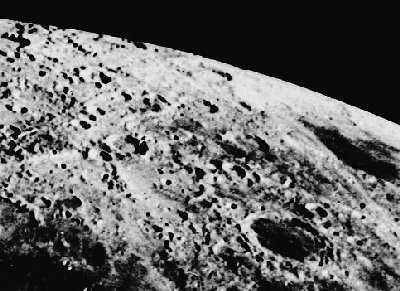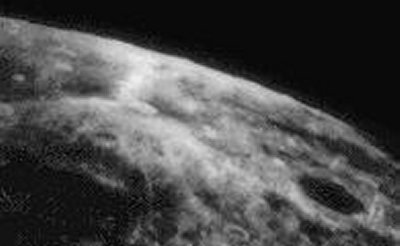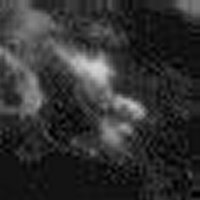|
|
|
#1 |
|
Guest
Posts: n/a
|
One of John's favorite subjects
Well the first thing we need to do before we start is to clear up a couple of old myths. Because as long as you believe these two, you will live forever in denial of reality... and as such there will be no help for you...  Myth Number One There is no Atmosphere on the Moon This has been floating around for about as long as the "Dark side of the Moon" Myth Number Two Since we only see one side of the Moon, the other side must be Dark" Lets start with Myth Number Two The moon revolves on its axis ONE revolution per orbit... thus we always see the same face... When the Earth is between the Moon and the Sun we see a full moon and the farside of the Moon is dark..However when the Moon is between the Earth and the Sun... we see a 'New Moon' that is dark, while the farside is now in full sunlight... PHASES OF THE MOON Now that we have that cleared up, (don't feel bad because a curator at the Lick Observatory used "Darkside" to explain to tourists... she gave us an evil glare when we corrected her  ) lets go on to #1 ) lets go on to #1Myth Number One There is no Atmosphere on the Moon This is UNTRUE and the only contention between official sources and John Lear is the AMOUNT And since John's story has been the same forever and NASA et al keep changing theirs, I know where I will put my money  Does the Moon Have an Atmosphere? EXHIBIT #1 Lunar Atmosphere Data Sheet Diurnal temperature range: >100 K to <400 K (roughly -250 F to +250 F) Total mass of atmosphere: ~25,000 kg Surface pressure (night): 3 x 10-15 bar (2 x 10-12 torr) Abundance at surface: 2 x 105 particles/cm3 Estimated Composition (particles per cubic cm): Helium 4 (4He) - 40,000 ; Neon 20 (20Ne) - 40,000 ; Hydrogen (H2) - 35,000 Argon 40 (40Ar) - 30,000 ; Neon 22 (22Ne) - 5,000 ; Argon 36 (36Ar) - 2,000 Methane - 1000 ; Ammonia - 1000 ; Carbon Dioxide (CO2) - 1000 Trace Oxygen (O+), Aluminum (Al+), Silicon (Si+) Possible Phosphorus (P+), Sodium (Na+), Magnesium (Mg+) Composition of the tenuous lunar atmosphere is poorly known and variable, these are estimates of the upper limits of the nighttime ambient atmosphere composition. Daytime levels were difficult to measure due to heating and outgassing of Apollo surface experiments. SOURCE: NASA Lunar Fact Sheet So Right from the start we can see that YES there is an atmosphere, albeit tenuous according to NASA's data. EXHIBIT #2 Cloud Above the Crater Alphonsus Excerpt For years scientists believed there was no trace of gas or an atmosphere on the moon. Now there is some evidence of an atmosphere, though it may be almost too thin to measure. During an occultation of the Crab nebula, astronomers using a radio telescope at Cambridge University detected a slight bending of the rays of the nebula. This deflection could have been due to a thin lunar atmosphere. In 1956 observers reported what appeared to be a cloud above the crater Alphonsus. In 1958 a Soviet astronomer, Nikolai A. Kozyrev, announced an apparent eruption from the crater. He took spectrograms, which indicated the presence of rarefied gases. His findings caused a revival of debates on the volcanic versus the meteoric origin of moon craters. Many scientists believed that Kozyrev had seen not a true volcanic eruption but a puff of gas and dust from below the surface, probably caused by heat. Some small craters within Alphonsus have “black halos” believed to be deposits of material that have filled the rills along which they are located. Source Encyclopedia Britanica - Article-204895 EXHIBIT #3 Lunar Weather Report: 1946 Clear today, no chance of rain or lightning storms.....  LICKOBS9 Extreme weather warning... Hurricane Endymion moving in...  LICKOBSA Lick Observatory, 1946 January 17d 07h 51m UT The two images above are clips from two Lick Observatory photographs taken days apart in 1946. The large black crater is Endymion... the clips are located at the 1 O'Clock position on the original images which are available below. As you can see the second image is obscured by a cloud of some form, that covers a large area Photo Source EXHIBIT #4 Plume of Vapor or Dust Cloud captured on the Lick Telescope 1946. There are more anomalies on Lick images but we will get to those in another thread as they do not concern us with the atmosphere  SIZE="4"]EXHIBIT #5[/SIZE] Atmosphere: Extensive and of High Scientific Interest Excerpt Though the Moon is surrounded by a vacuum higher than is usually created in laboratories on Earth, its atmosphere is extensive and of high scientific interest. During the two-week daytime period, atoms and molecules are ejected by a variety of processes from the lunar surface, ionized by the solar wind, and then driven by electromagnetic effects as a collisionless plasma. The position of the Moon in its orbit determines the behaviour of the atmosphere... In addition to the near-surface gases and the extensive sodium-potassium cloud detected around the Moon (see the section Effects of impacts and volcanism below), a small amount of dust circulates within a few metres of the lunar surface. This is believed to be suspended electrostatically... Source Encyclopedia Britanica - Article-54205 |

|
«
Previous Thread
|
Next Thread
»
|
|
All times are GMT. The time now is 12:52 PM.







 Threaded Mode
Threaded Mode